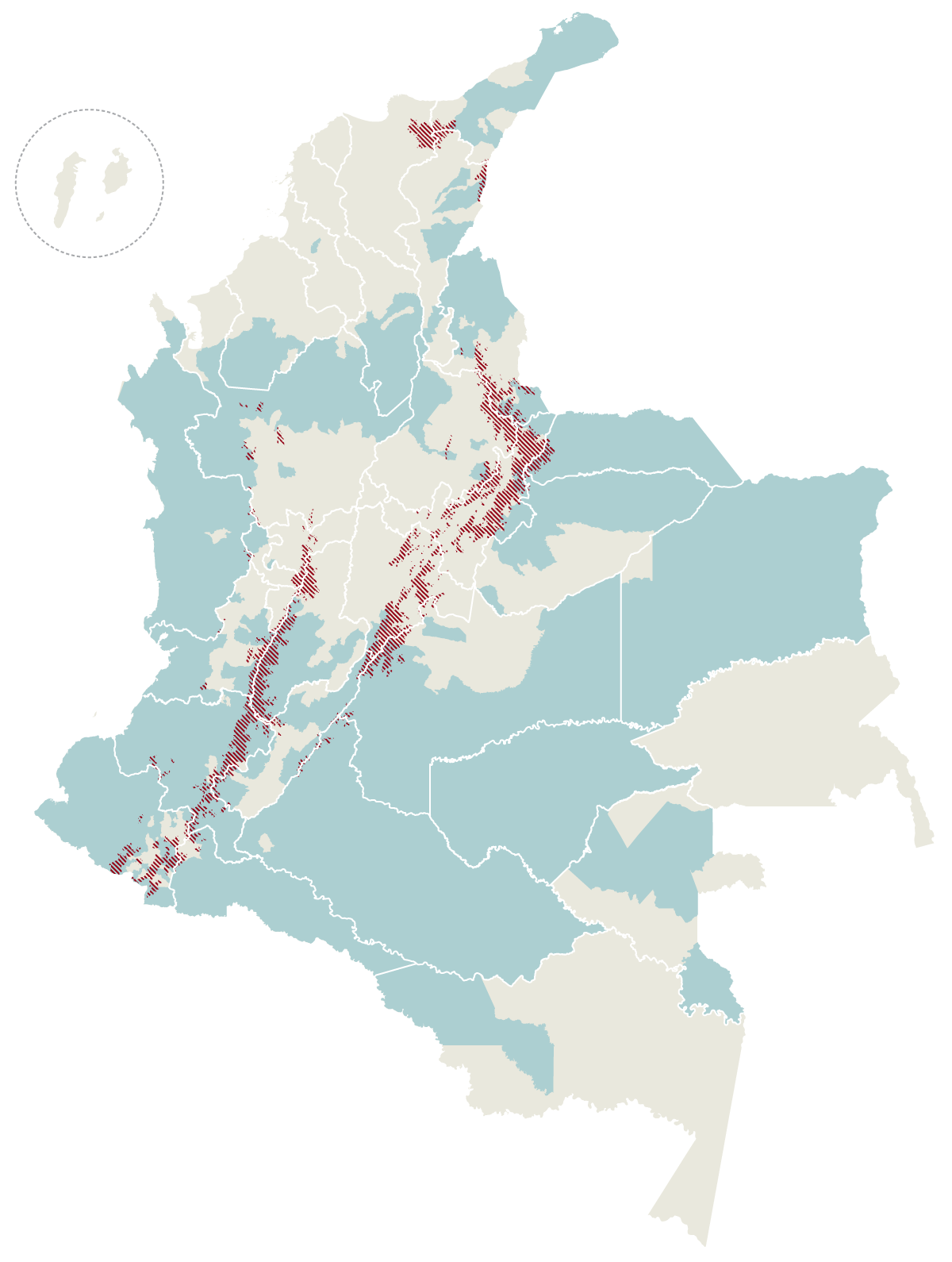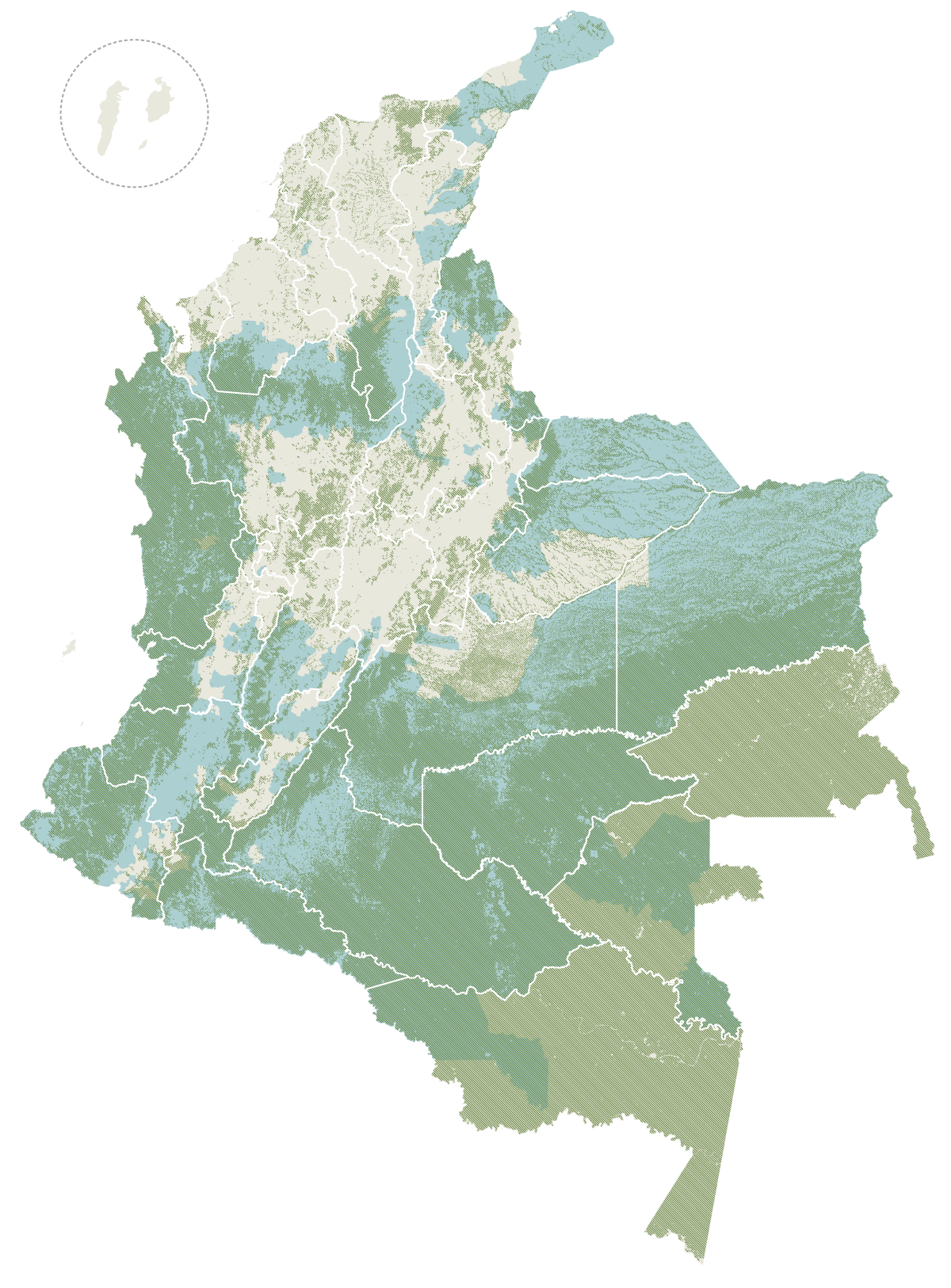After the Colombian peace agreements, prioritized municipalities must be protected and intervened in order to maintain their ecological integrity and capacity of offering benefits to society in the long term.
The agreement between the Colombian government and FARC guerrillas that seeks to end the country's armed conflict significantly changes the context and the conditions of managing great part of the national territory and its associated biodiversity. Thus, when the actions put forth by the peace agreements are implemented, special attention must be given to zones that are prioritized and areas that may be affected by the political and economical changes that will arrive with the peace process.
Up to the date, there is no official information available to the public about the exact areas prioritized for the post-conflict phase. Nevertheless, there are some proposals: "Environmental Considerations for the Construction of a Stable, Lasting, and Sustainable Territorial Peace in Colombia" published in the end of 20141 by the United Nations in Colombia, the Environment and Sustainable Development Ministry of Colombia, and GIZ; and "What We Have Gained" published in 2015 by the Fundación Paz y Reconciliación (Peace and Reconciliation Foundation)2. The descriptive approach hereby developed considered as prioritized all the municipalities reported by these sources, for a total of 298, and their land covers were used for an initial analysis.
This analysis used information of natural forests and strategic ecosystems such as paramos and wetlands instead of biological records because available records are not uniform and many areas in the country have had few efforts of data collection. This first approach creates a preliminary notion about the territories' conditions and a base for further formulation of hypotheses with detailed inquires and development of research areas.
The 298 municipalities shelter important areas of natural forest, paramo, and wetland land covers that should be protected and intervened in order to maintain their ecological integrity and capacity of offering benefits to society in the long term. In this sense, the actions developed in these areas should guarantee their conservation, minimize their vulnerability, and avoid their transformation. The contrary would imply the deterioration of ecosystem composition, structure or functioning, therefore directly affecting species and provided ecosystem services.
The prospect of progressing on the construction of a country without violent political confrontations is an opportunity to sustainably relate to valuable ecosystems that support the economy and social welfare. So, the construction of peace requires the strengthened social agreements and renovated institutions that protect the country's ecological heritage, foster regional and sustainable economies, and guarantee fundamental human rights.
New strategies for the management of knowledge that contemplate advances in academia and contributions of other systems of knowledge production (traditional, indigenous, or local) should be implemented. These should aim to encourage practicing and learning communities that are able to guide changes, manage unexpected situations, diminish vulnerabilities, and increase the social and ecological resilience of those territories in which actions towards a sustainable peace will be developed. Constructing peace requires healthy and resilient territories, economies that are considerate of life according to the ecology of the regions, permanent dialogue, and long-term perspectives.



